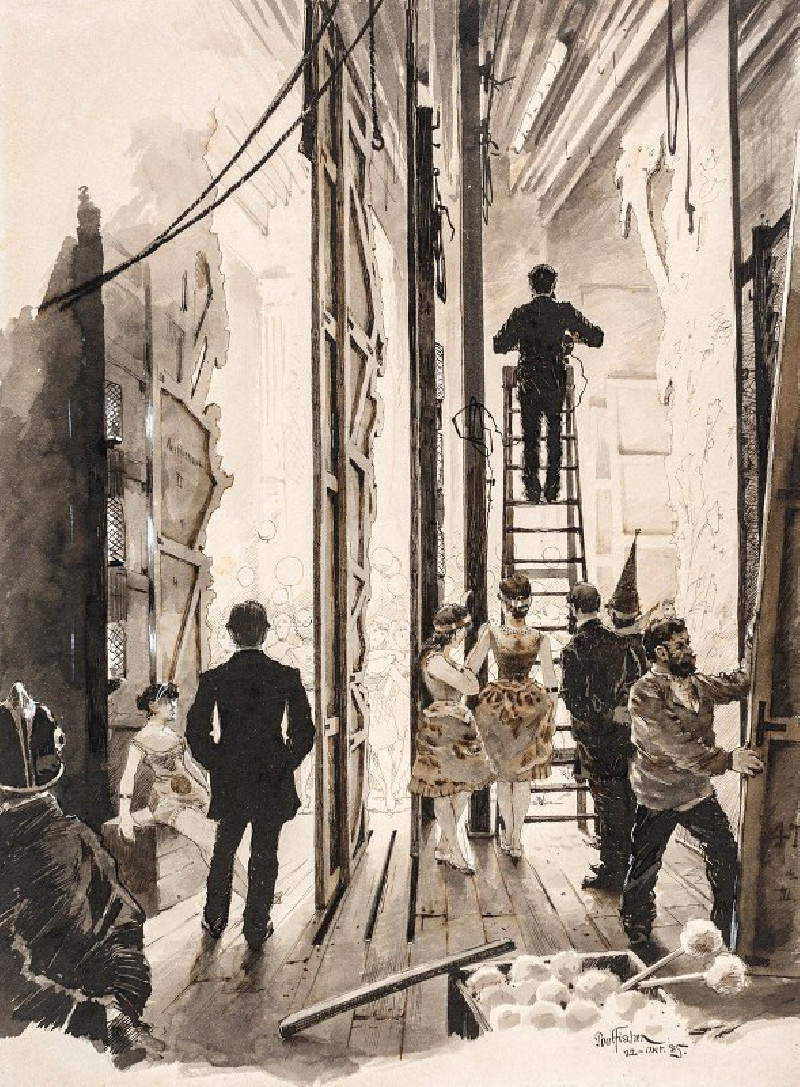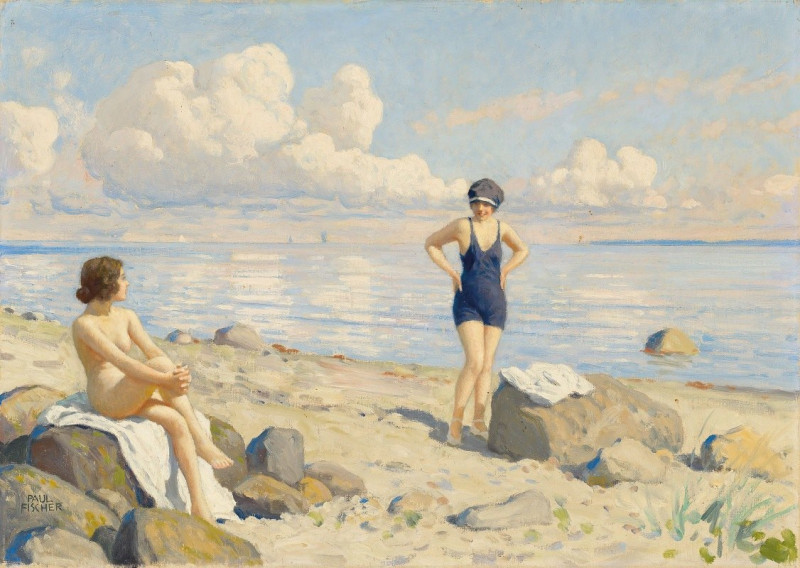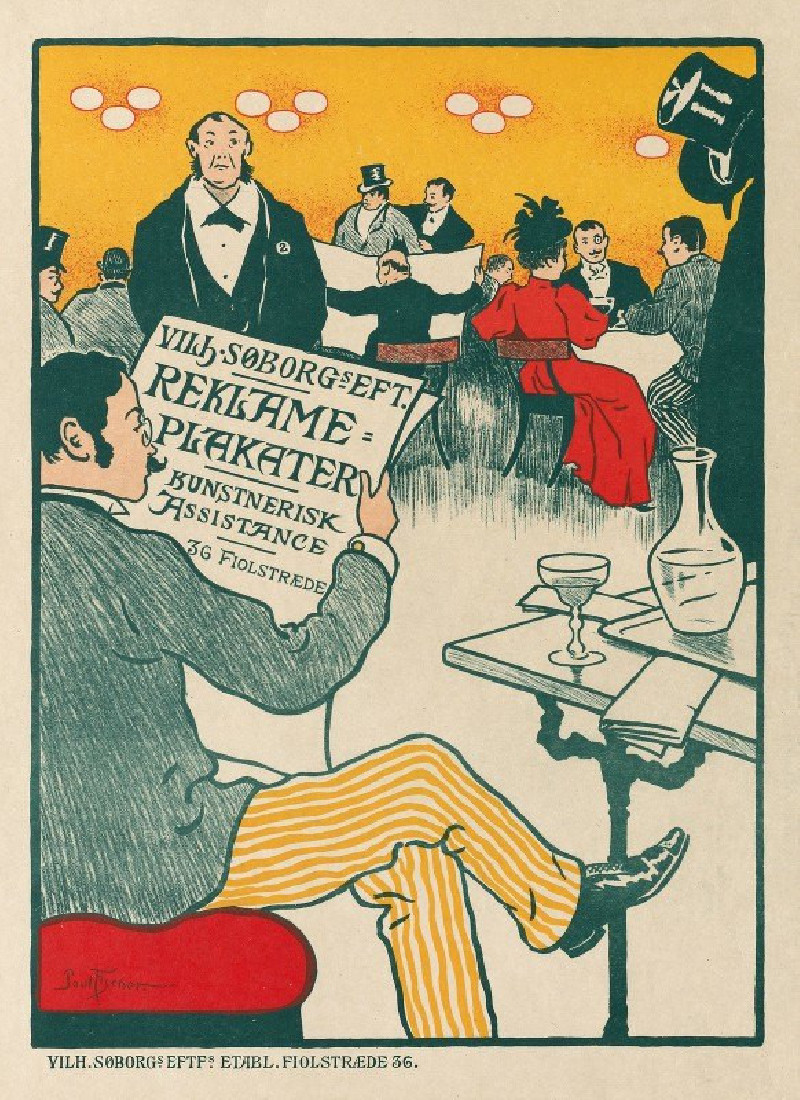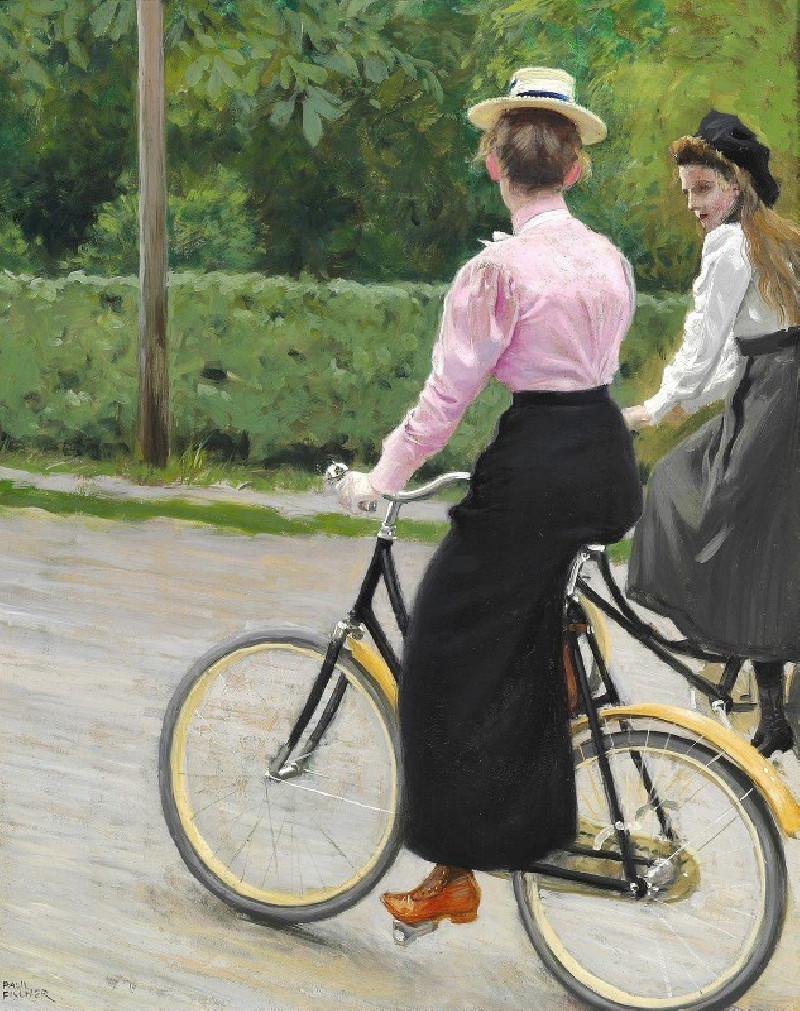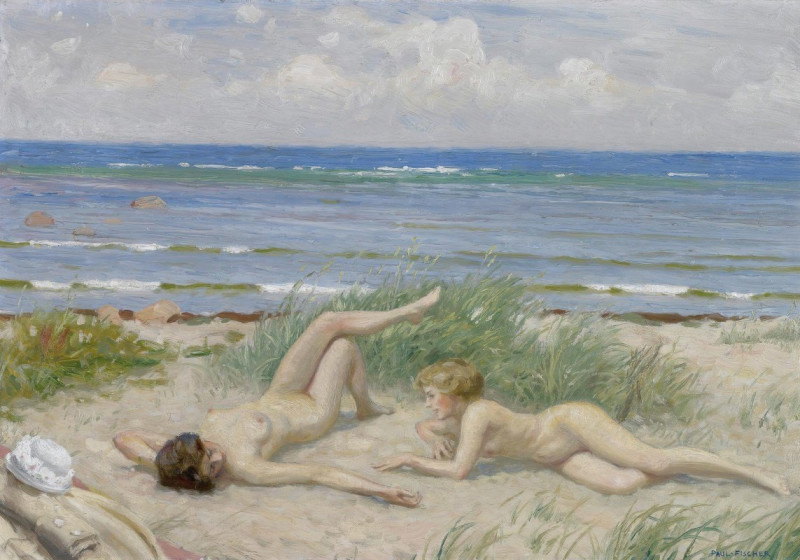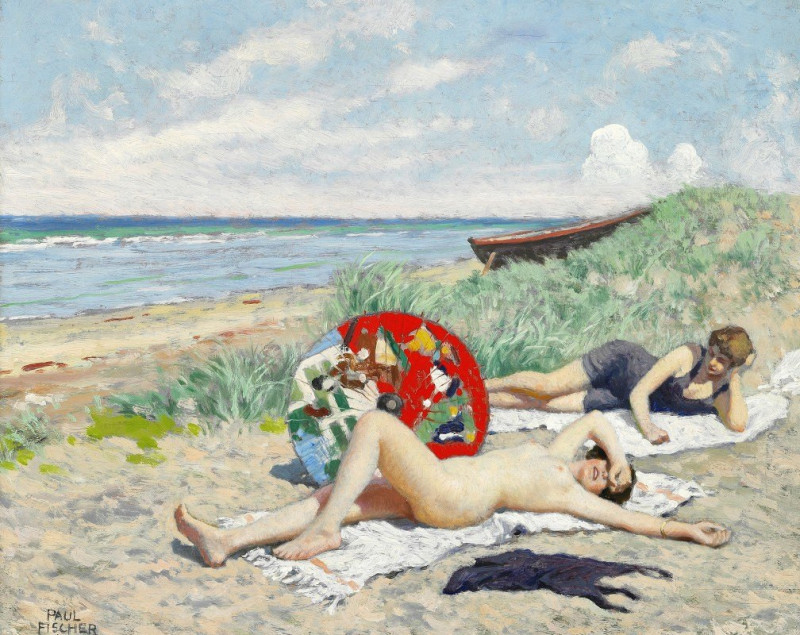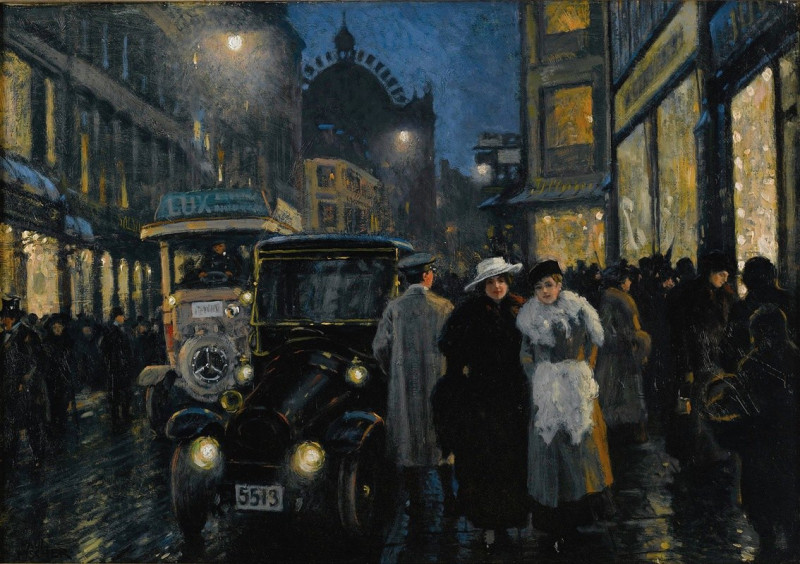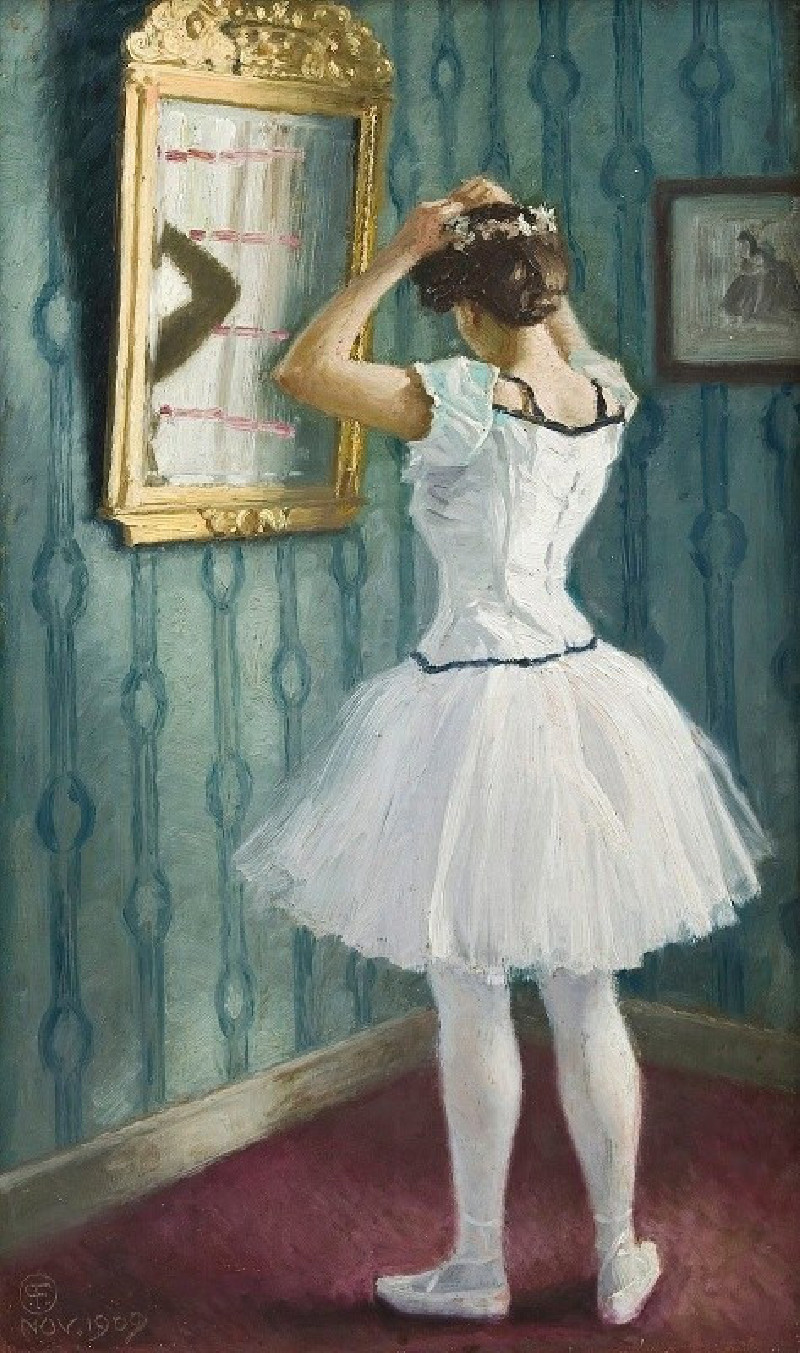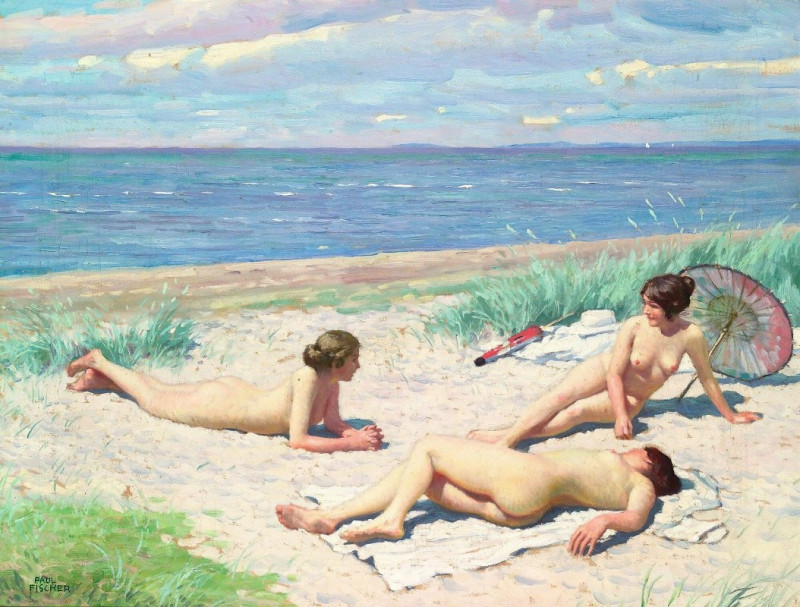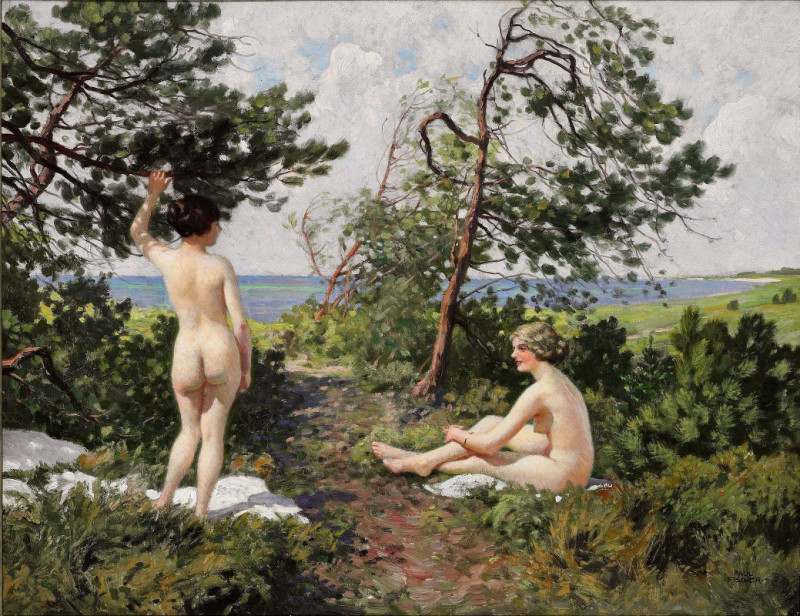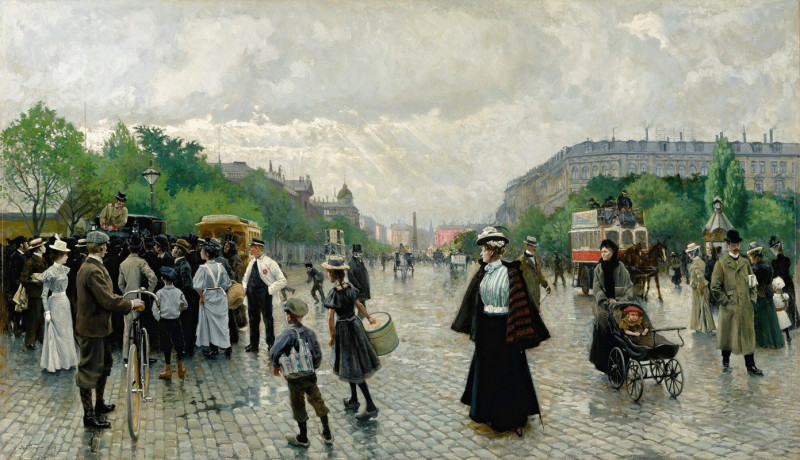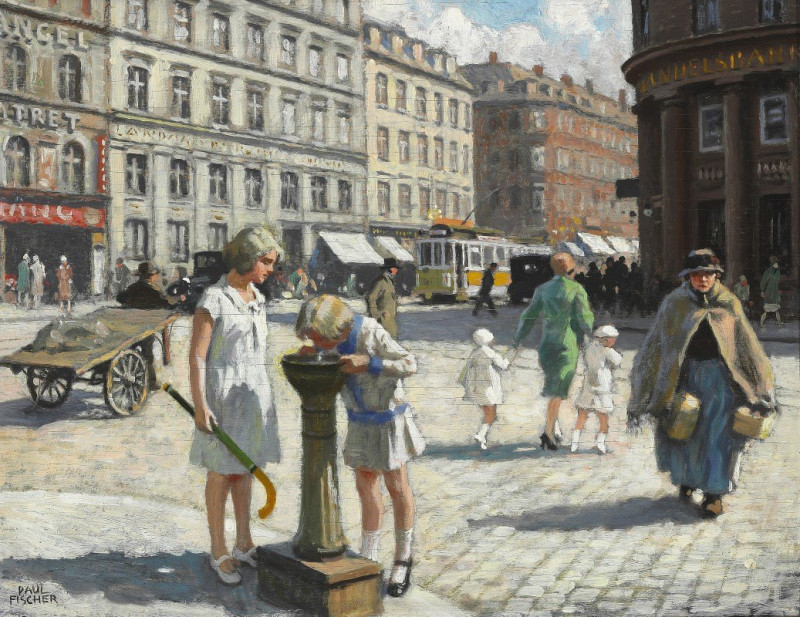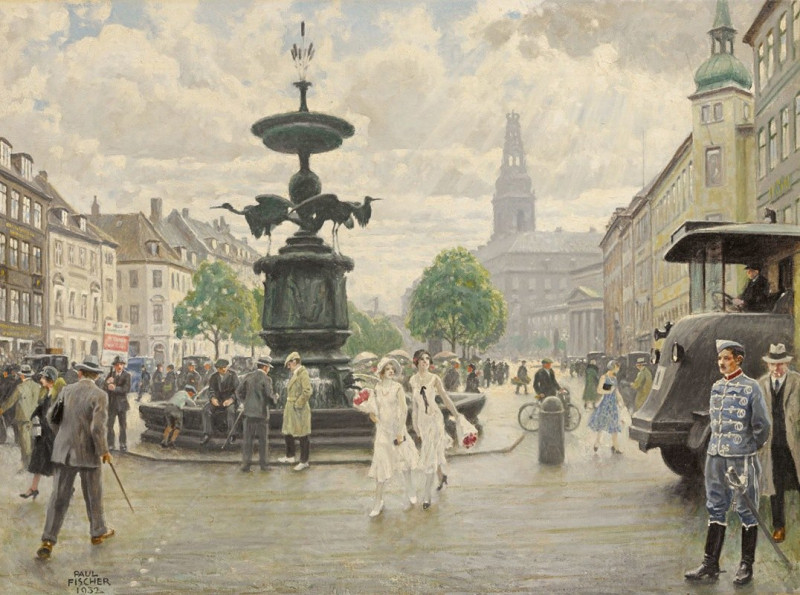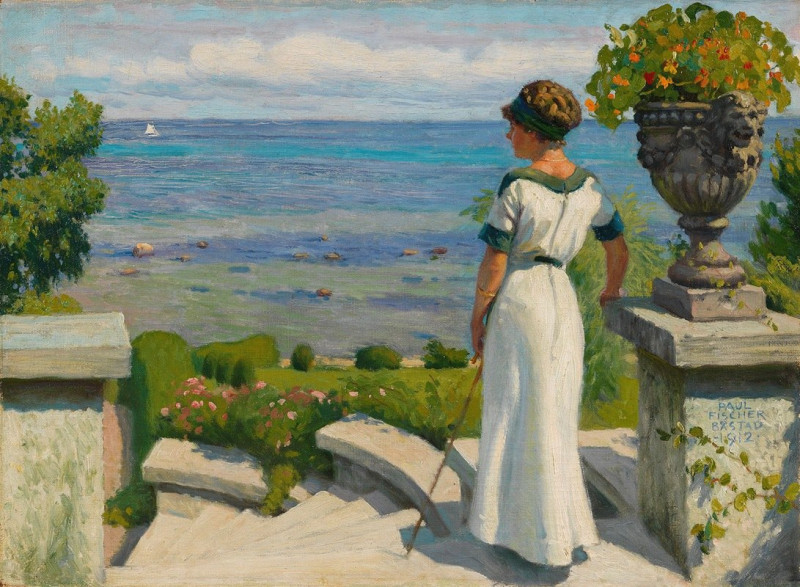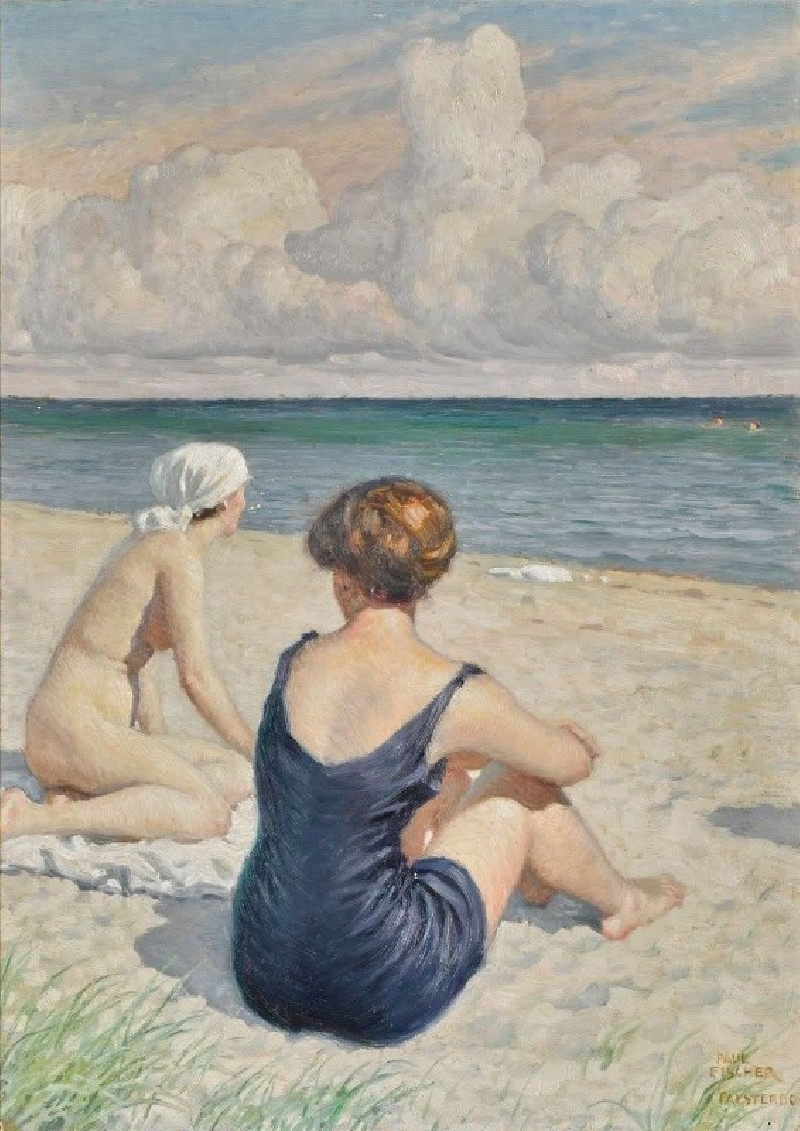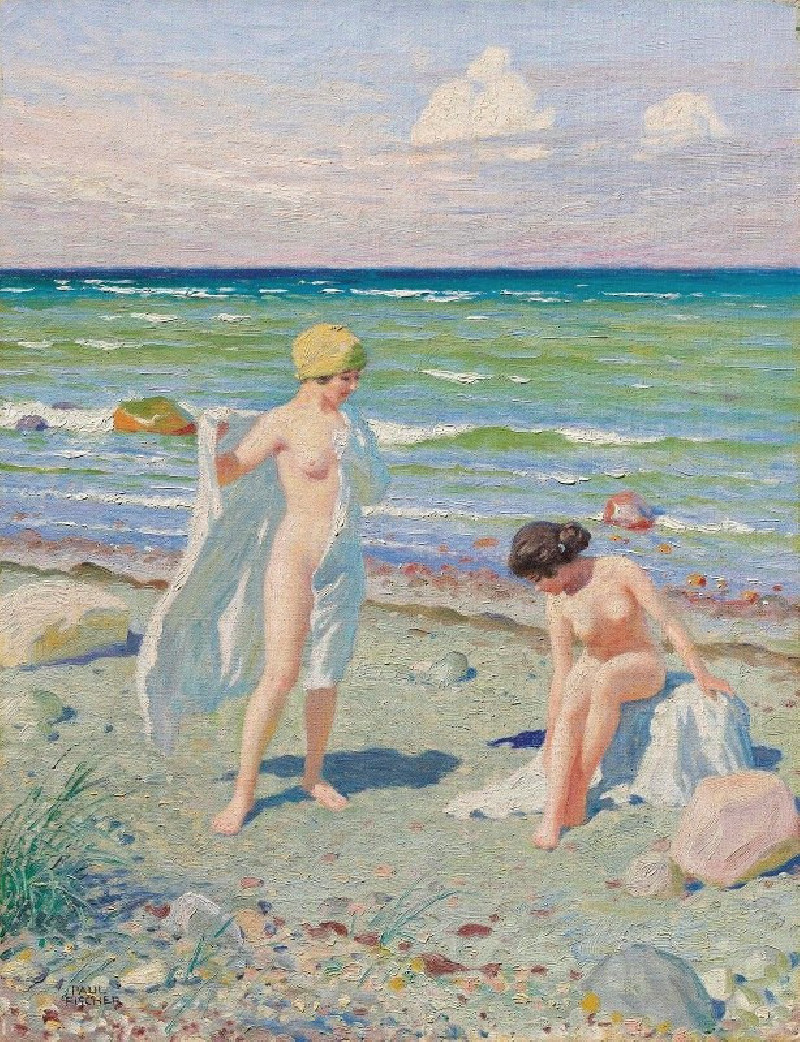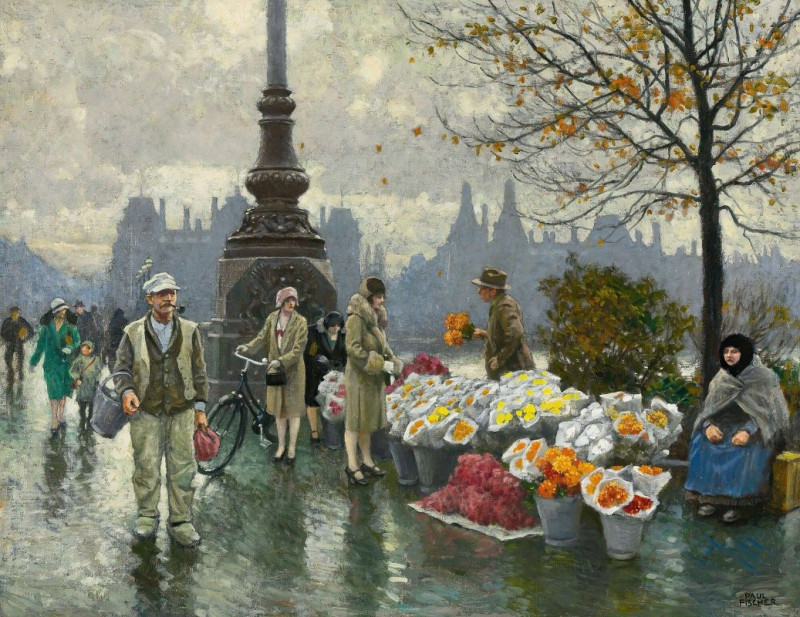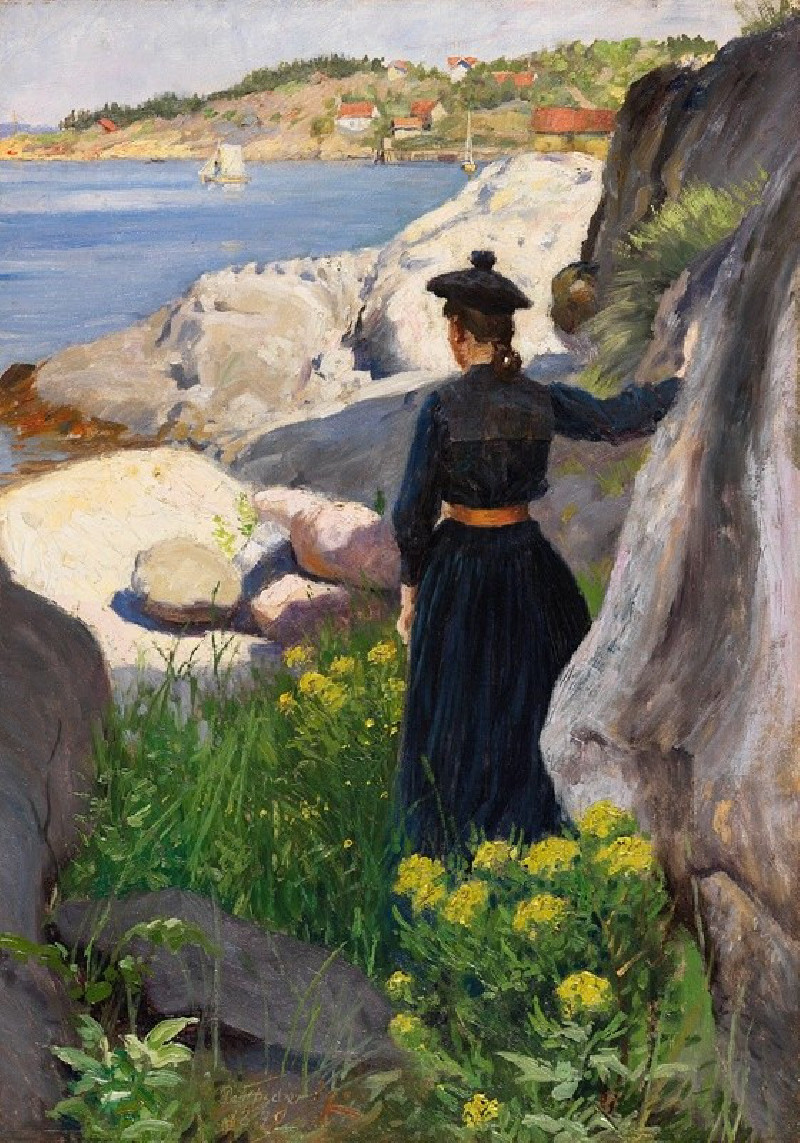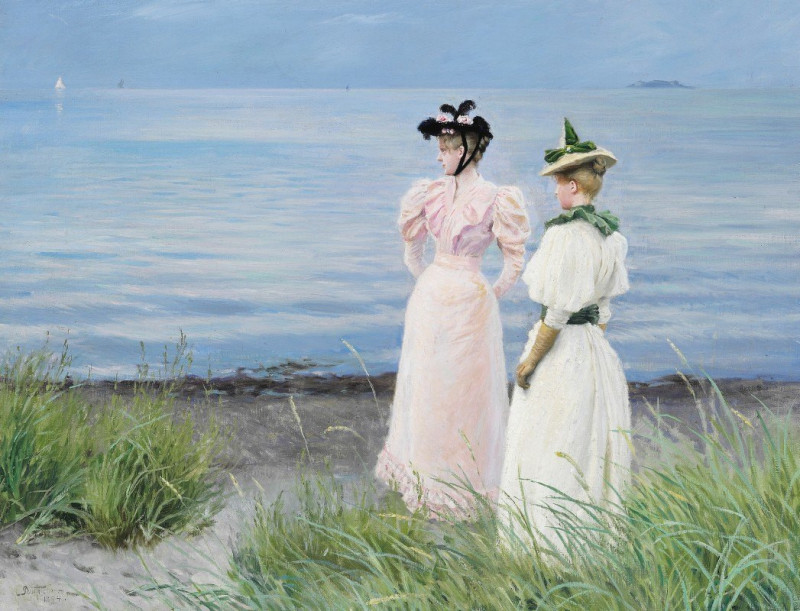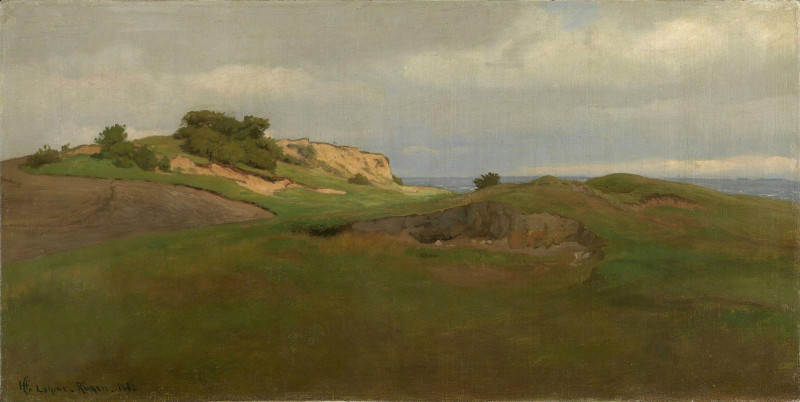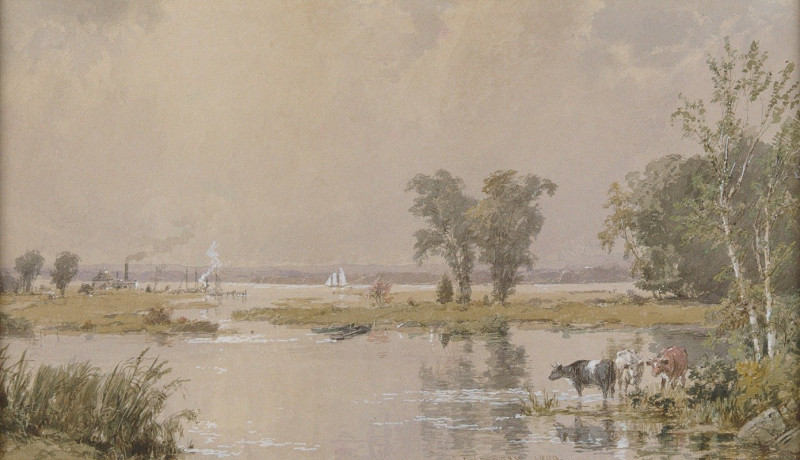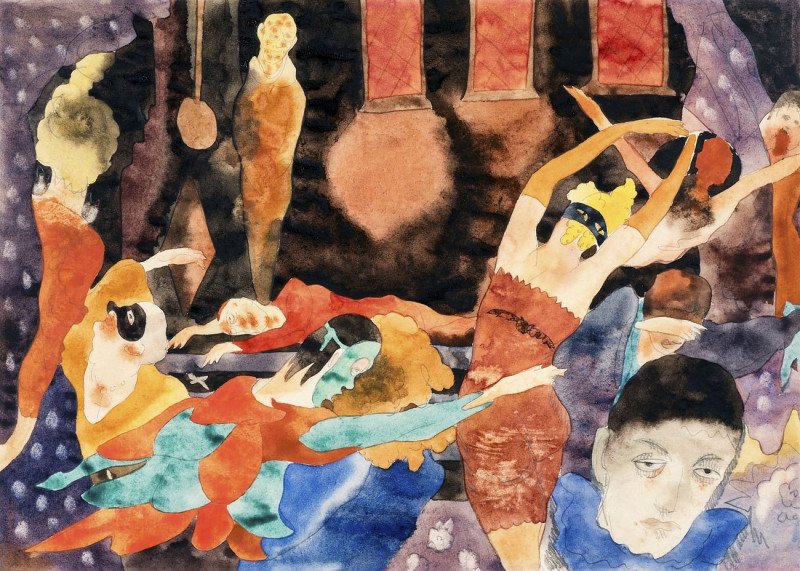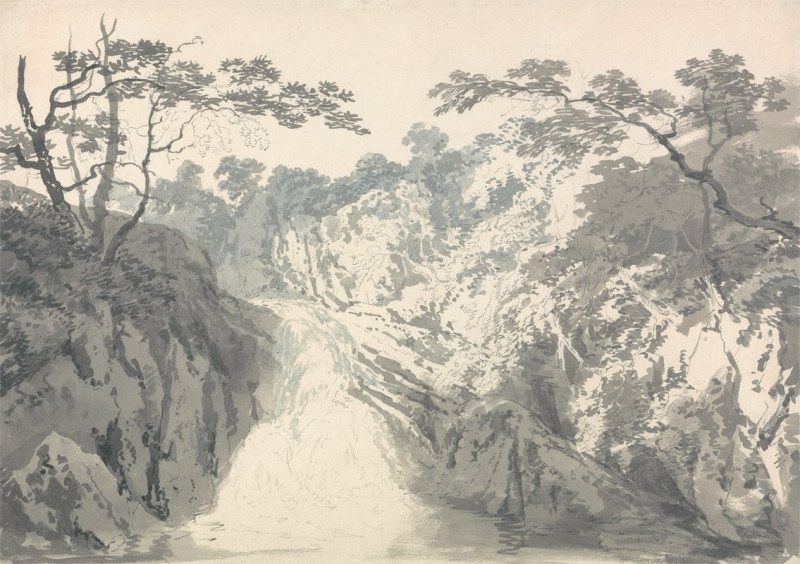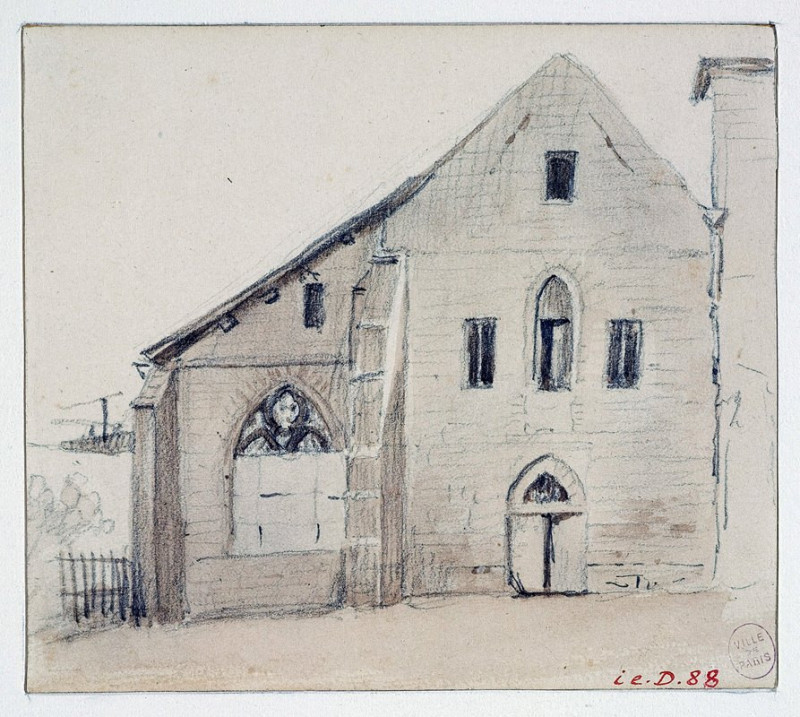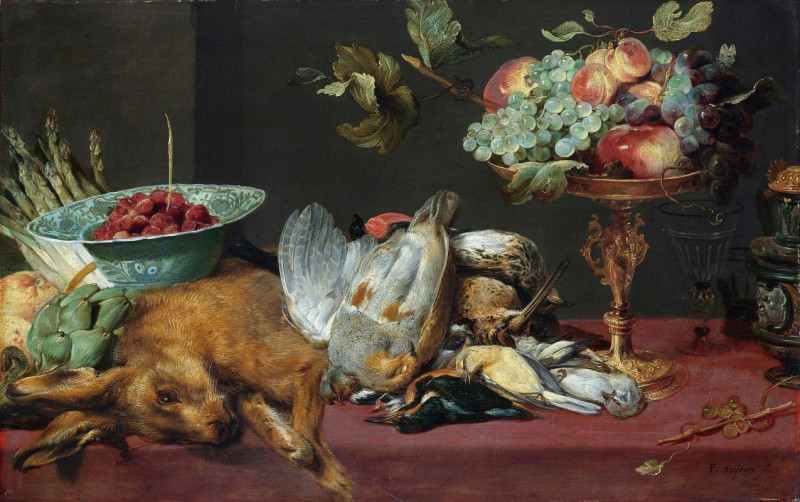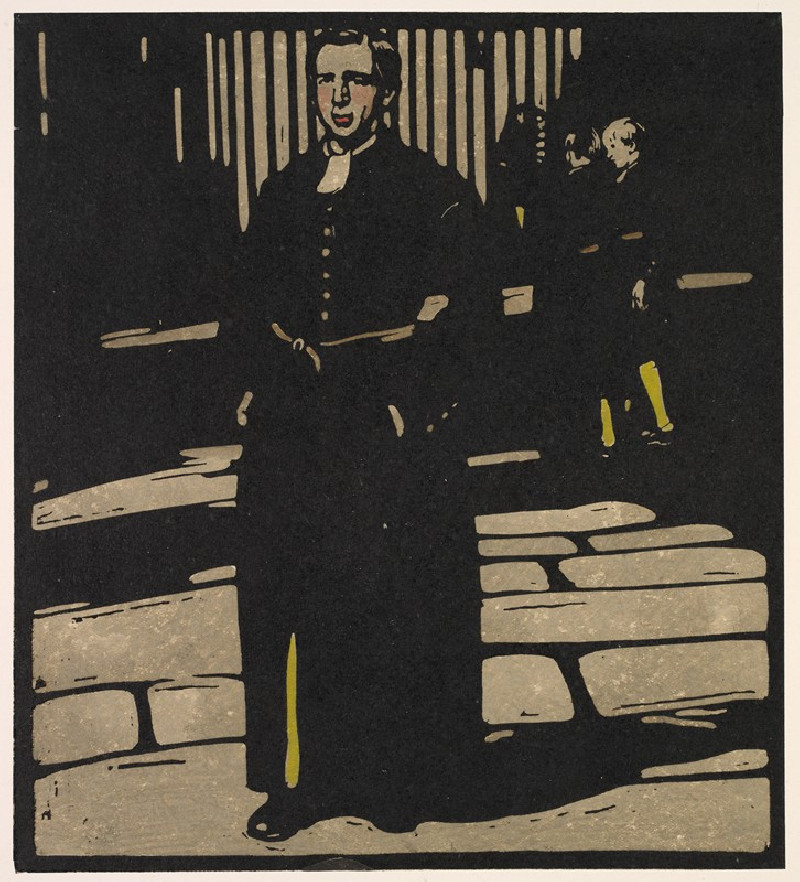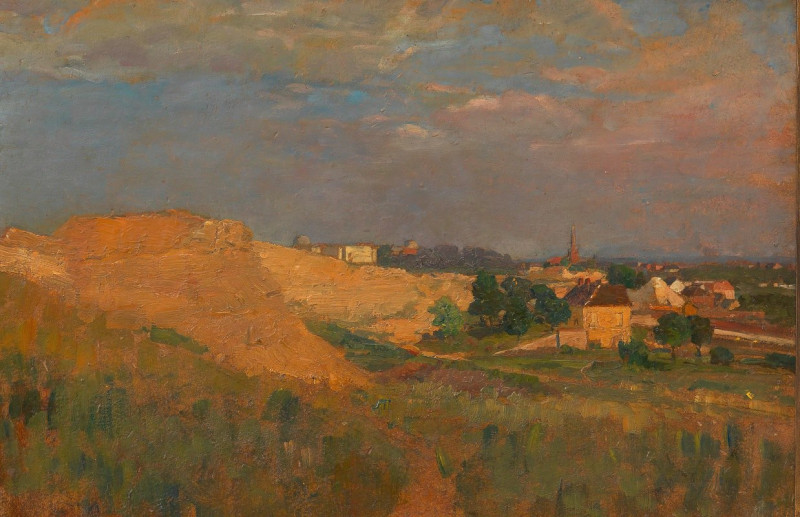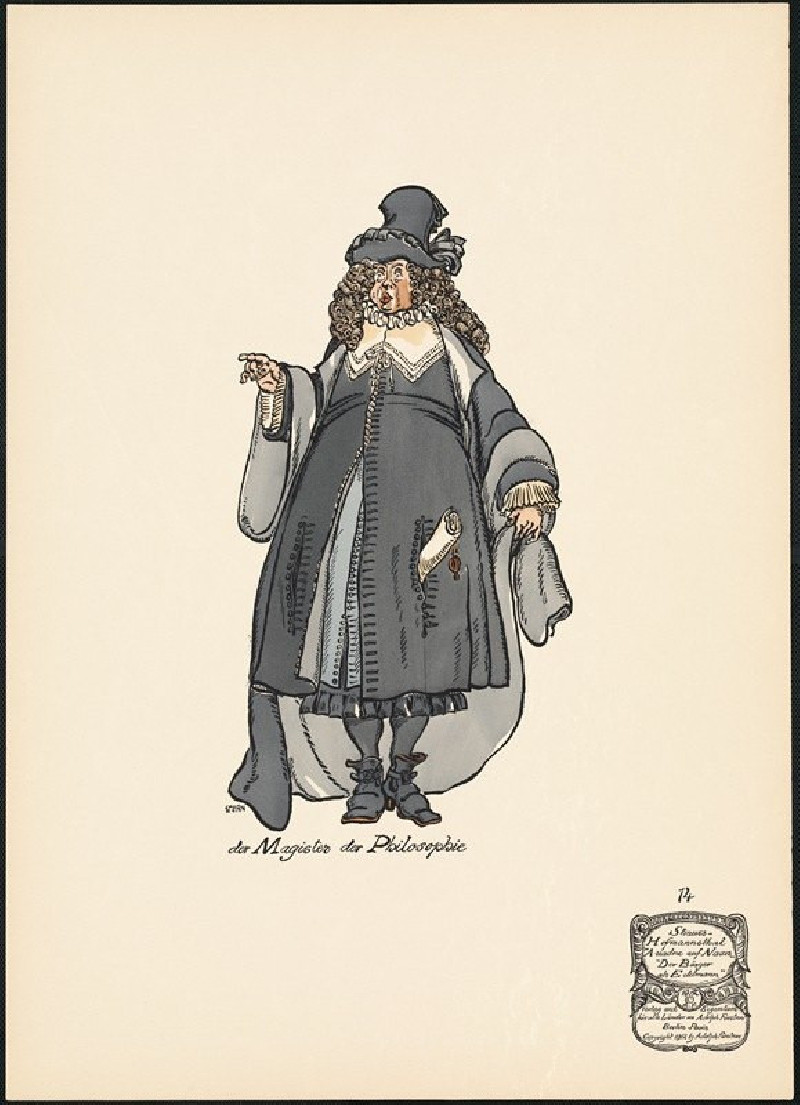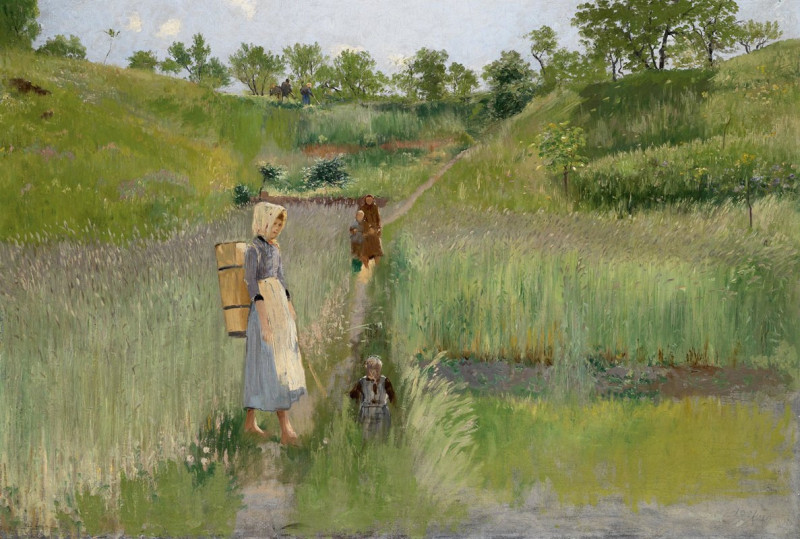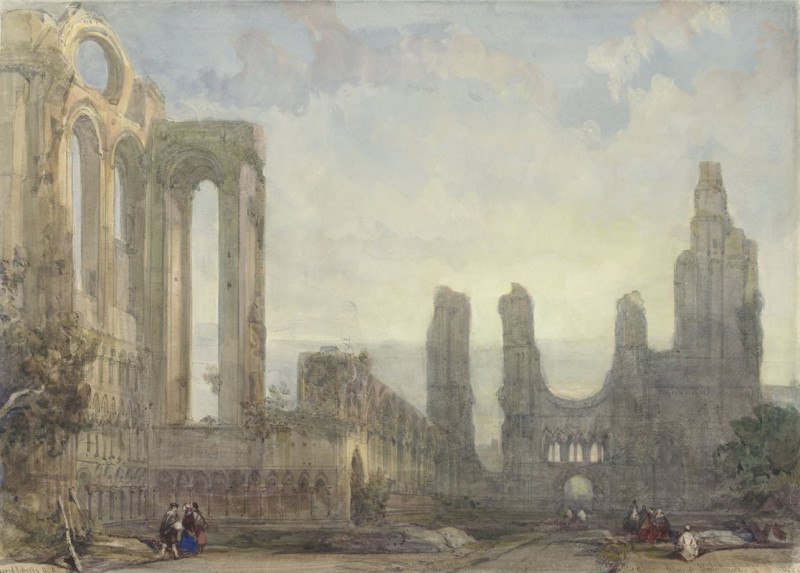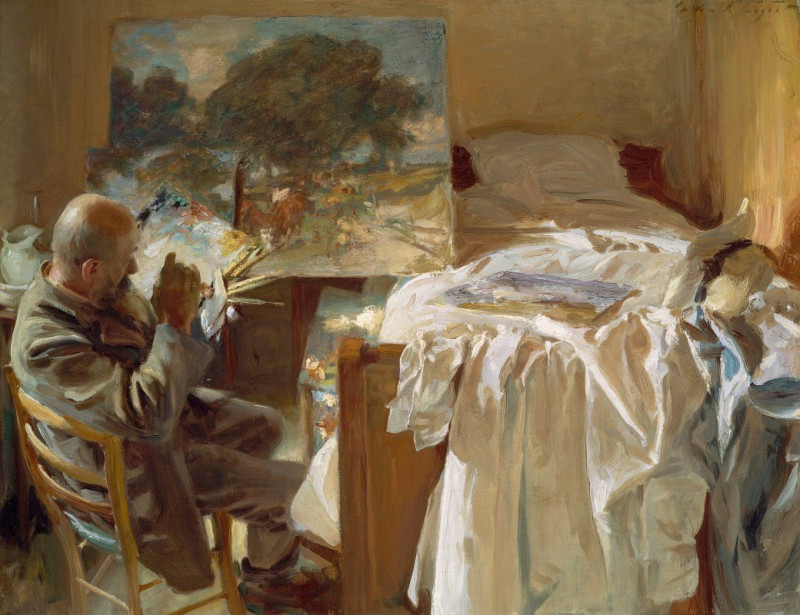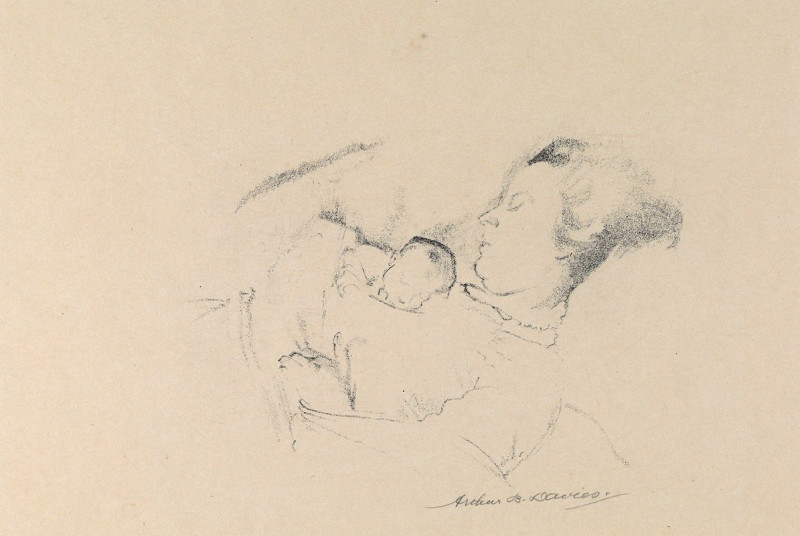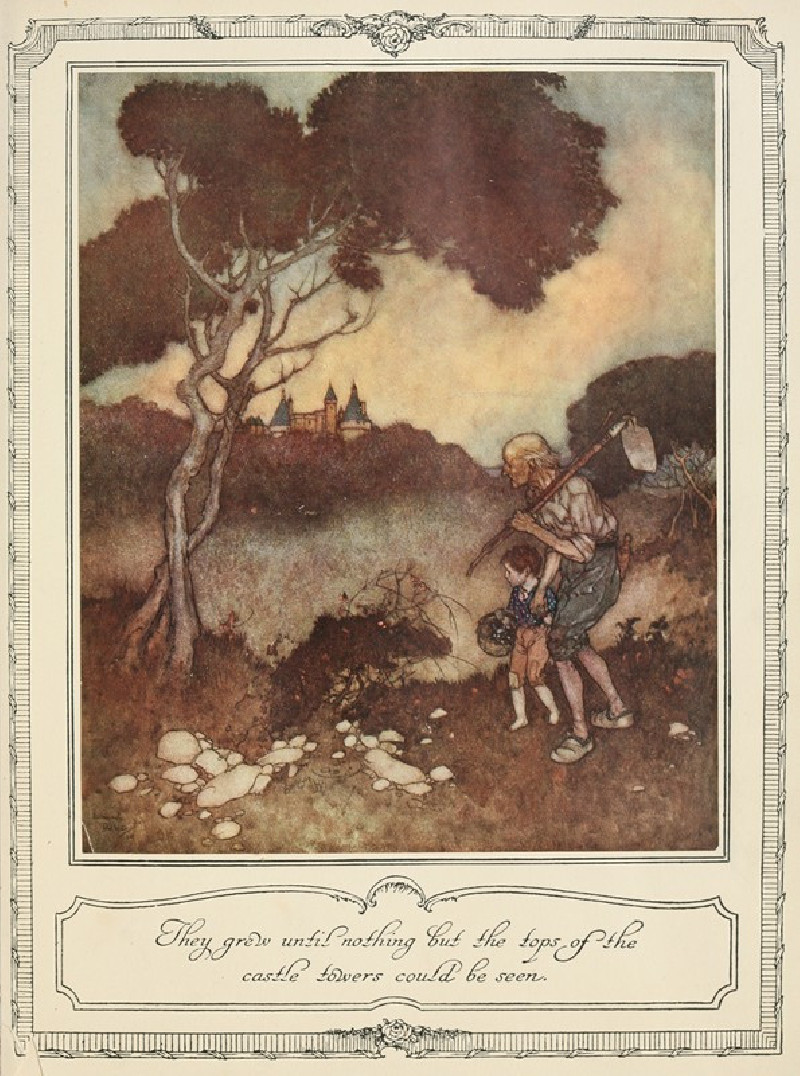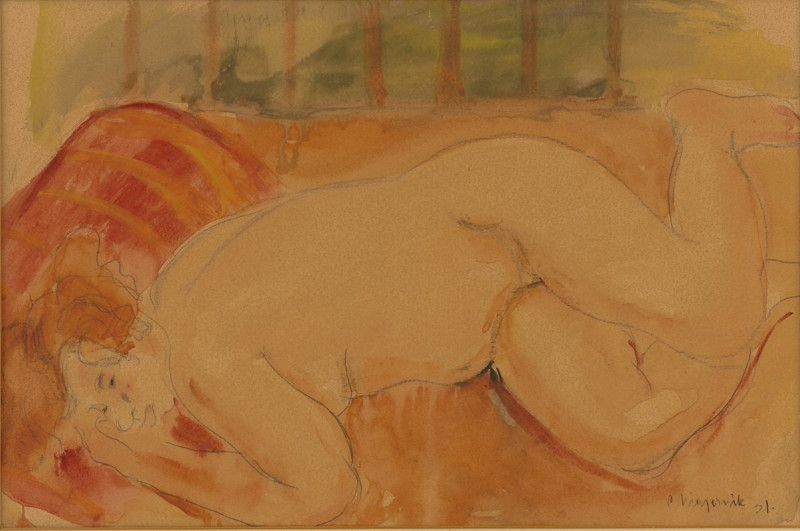Casinos kulisser (1885)
Technique: Giclée quality print
Recommended by our customers
More about this artwork
Paul Fischer, a renowned Danish artist, masterfully captures a behind-the-scenes glimpse into the bustling activity of a theater in his 1885 watercolor painting, "Casinos kulisser." This artwork allows the viewer to peer into the narrow backstage corridors where the magic of performance is meticulously crafted.The painting portrays a series of individuals, likely performers and stagehands, engaged in diverse preparations. Dominating the scene is a man atop a ladder, focused on adjusting or fixing what appears to be stage equipment. Around him, various characters in elaborate costumes move about or stand in conversation, imbuing the scene with a sense of lively anticipation.Fischer's use of light and shadow magnificently highlights the transient beauty of these fleeting moments before the curtain rise. The contrasts and the detailed depiction of textures—from the reflective floor to the rough, paint-spattered walls—lend a tactile quality to the work that almost pulls the viewer into the scene."Casinos kulisser" is a tribute to the unseen labor and artistry that contributes to the enigmatic allure of theater.
Delivery
Returns
Paul Gustav Fischer was a Danish painter.
Paul Fischer was born in Copenhagen, Denmark. He belonged to the fourth generation of a Jewish family which originally came from Poland. He was the son of Philip August Fischer (1817-1907) and Gustafva Albertina Svedgren (1827-83). The family was upper middle class; His father had started as a painter, but later succeeded in the business of manufacturing paints and lacquers.

